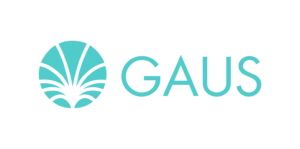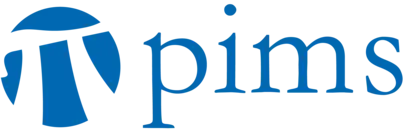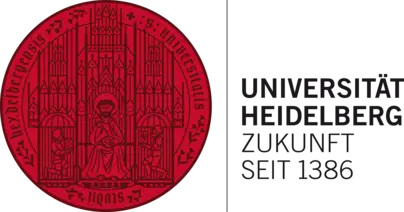Non-archimedean geometry and eigenvarieties
March 06 - 17, 2023 • University of HeidelbergThe booklet for the Spring School containing all relevant information is now available.
General information
Location: University of Heidelberg, Germany
Date: 06.03.23 - 17.03.23
Description:
Families of p-adic automorphic forms are well studied objects of arithmetic geometry since the pioneering work of Hida and Coleman. Their study resulted in the definition of geometric objects, called eigenvarieties, that parametrize systems of Hecke eigenvalues of p-adic automorphic forms. Conversely, the rich geometry of these varieties gives insights about p-adic (and thereby also about classical) automorphic forms. Recent techniques from perfectoid geometry, locally analytic representation theory and the point of view of the p-adic Langlands program give new insights and impulses.
The spring school will give an introduction to both p-adic automorphic forms and eigenvarieties as well as the necessary background in p-adic analytic geometry. The courses will be complemented by research talks that will focus on recent developments in the area.
The first week of the spring school will focus on p-adic analytic geometry, the analogue of complex analytic geometry over p-adic base fields. We will study classical rigid analytic spaces from the point of view of adic spaces and introduce perfectoid spaces. The second week will focus on p-adic automorphic forms and eigenvarieties. We will introduce and compare several approaches to p-adic automorphic forms.
Spring School lectures:
- John BERGDALL, University of Arkansas
- Eugen HELLMANN, University of Münster
- Ben HEUER, University Bonn
- Katharina HÜBNER, University of Heidelberg
- Adrian IOVITA, Univ. Concordia / Padua
- Christian JOHANSSON, University of Gothenburg
- Judith LUDWIG, University of Heidelberg
- James NEWTON, University of Oxford
Research Talks:
- Rebecca BELLOVIN, University of Glasgow
- Chris BIRKBECK, University College London
- Christian JOHANSSON, University of Gothenburg
- Lucas MANN, University Bonn
- Joaquín RODRIGUES JACINTO, Univ.Paris Saclay
- Mingjia ZHANG, University Bonn
- Vincent PILLONI, Université Paris-Saclay
John Bergdall
These lectures will focus on valuation theory for topological rings. The discussion will be organized around the class of Huber rings that underlie the theory of adic spaces. We will discuss their definition, basic properties, and ring-theoretic constructions such as the subset of topologically nilpotent elements. We will further outline the theory of continuous valuations and valuations with supports on topological rings. And, depending on goals set by other lectures, we will explain technical material on spectral spaces, topology, specialization, dimension theory, and so on. Throughout, we will gather as many examples as possible and hopefully build intuition.
Katharina Hübner
Starting with a Huber pair $(A,A^+)$ we construct its adic spectrum $X=\mathrm{Spa}(A,A^+)$. This is a certain space of continuous valuations equipped with pre-sheafs of rings $\mathcal{O}_X$ and $\mathcal{O}^+_X$. We discuss the relevant cases when these pre-sheaves are actually sheaves, allowing to glue adic spectra together to obtain adic spaces. In order to understand the underlying topological space of the adic spectrum of $(A,A^+)$, we study specialization relations of points in $\mathrm{Spa}(A,A^+)$. We then take a look at analytic adic spaces. They correspond to Tate Huber pairs and are the type of adic spaces we are interested in.
Christian Johansson
These lectures will mostly focus on adic spaces with certain finiteness conditions, most importantly rigid spaces. We will discuss some aspects of sheaf theory and cohomology on adic spaces, and some obstructions to setting a theory of coherent/quasi-coherent sheaves on general adic spaces. We will then set up the theory of coherent sheaves of rigid analytic varieties and discuss the analogues of Cartan's Theorem A and B as well as finiteness of cohomology for proper rigid spaces. The latter will necessitate a discussion of various properties of morphisms of rigid spaces, such as smoothness, étaleness and properness amongst others. Finally, we will discuss some examples of particular importance in the historic development of the theory, such as Tate's uniformization of elliptic curves with multiplicative reduction and the Drinfeld-Cerednik uniformization of Shimura curves.
Ben Heuer
In this course, we first define perfectoid algebras, which are certain kinds of topological rings over the p-adic integers. We discuss some basic properties, most importantly the "tilting equivalence" which gives an equivalence between perfectoid algebras in characteristic 0 and those in characteristic p. Building on the previous lectures, we then discuss perfectoid spaces, which are adic spaces built out of adic spectra of perfectoid algebras. A basic and important result about perfectoid spaces is the almost acyclicity theorem, for which we will sketch a proof. Finally, we discuss examples of how perfectoid spaces arise in nature, and how we can use them to study rigid spaces. For this we introduce several locally perfectoid topologies on a rigid space, namely the pro-étale and the v-topology. We then use these to discuss applications to p-adic Hodge theory.
Judith Ludwig
In this course we explain the eigenvariety machine. This is an abstract gadget that eats spaces of p-adic automorphic forms and returns adic spaces that parametrize systems of Hecke eigenvalues of these forms. In order to build the machine, we need some results from p-adic functional analysis, which we will develop first. We will learn about compact operators on p-adic spaces and understand how to geometrically handle their spectral theory. We will then study the eigenvariety machine and some of its basic properties.
James Newton
This mini-course will explain the construction of eigenvarieties in various different contexts, including the prototypical example of the Coleman-Mazur eigencurve. We will also discuss some of the common geometric properties of eigenvarieties.
Adrian Iovita
Plan of the course: We will focus on three main themes. We will explain the main ideas and constructions first for modular curves and than for Siegel modular varietes.
1) p-adic variation of de Rham classes on modular curves
Fix a prime $p>2$. If $(H,\mathrm{Fil},\nabla)$ is a triple consisting of: the relative de Rham cohomology sheaf, $H$, of the universal generalized elliptic curve over a modular curve $X$, its Hodge filtration and Gauss-Manin connection, the goal of this section is to construct sheaves of Banach modules on certain strict neighborhoods of the ordinary locus in $X$ (seen as an adic space over $\mathrm{Spa}(\mathbb{Q}_p, \mathbb{Z}_p)$, which interpolates p-adically the family of sheaves with filtrations and connections $(\mathrm{Sym}^n(H), \mathrm{Fil}_n,\nabla_n)_{n\in \mathbb{N}}.$
The neighborhoods of the ordinary locus in $X$ are constructed first as neighborhoods of $\infty$ in $\mathbb{P}^1$, are pulled back by the Hodge-Tate period map to the perfectoid modular curve of infinite p-level and descended to $X$ by Galois theory. This allows for a good understanding of the dynamic of the $U_p$-operator on the secions of our sheaves.
2) Given a p-adic weight $k$, let us denote by $(W_k, \mathrm{Fil}_k,\nabla_k)$ the result of the construction at 1) above. The Kodaira-Spencer isomorphism allows us to see the connection, i.e. the family \( (\nabla_{k+2(n-1)}\circ \dots \circ \nabla_{k+2}\circ \nabla_k:W_k \to W_{k+2n})_{n\in \mathbb{N}}. \) This are interesting applications of this construction to a) triple product p-adic L-functions, for finite slope (versus ordinary) families of modular forms and b) Katz-type p-adic L-functions for cases when p is non-split in the CM field.
3) Let $k$ be a family weight. If $(W_K, \mathrm{Fil}_k, \nabla_k)$ is the Banach sheaf with filtration and connection constructed at 1) above, we'd like to compute the finite slope part of \[ H^1_{\mathrm{dR}}(Z,W_k^*), \] where $W_k^*$ is the de Rham complex $\nabla_k:W_k\to W_k\otimes\Omega^1_Z$, and $Z$ is the neighborhood of the ordinary locus in $X$ where $W_k$ exists.
We found that the best way to do this is to use Lie-algebra methods à la BGG and find a simpler complex, quasi-isomorphic to the (uncompleted) de Rham complex, which can be described in terms of overconvergent modular forms, and which computes the finite slope part of the de Rham cohomology. This has applications to de Rham Eichler-Shimura morphisms.
4) We will explain the ideas at 1) and 3) above for Siegel threefolds (i.e. for Shimura varieteis for $\mathrm{GSp}_4$).
Eugen Hellmann
In this course we will discuss a representation-theoretic approach to eigenvarieties using completed cohomology of locally symmetric spaces(e.g. the tower of modular curves) and
Emeton's locally analytic Jacquet-module.
We will start by introducing the representation theoretic background, the theory of so-called locally analytic representations developed by Schneider-Teitelbaum. After that we will
describe locally analytic parabolic induction (as well as a close relative of this construction) and Emerton's Jacquet-module. Applying the constructions to representations obtained from
the completed cohomology of modular curves we can reconstruct the eigencurve (and, if we replace the modular curves by more general Shimura varieties: more general eigenvarieties) as the support
of a coherent sheaf on the (rigid analytic generic fiber of the) deformation space of Galois representaions. The gloval sections of this coherent sheaf are identified with the dual of the Jacquet-module
of the completed cohomology and have an interpretation in terms of overconvergent p-adic automorphic forms.
We will finish the lecture course by relating the above construction to the p-adic local Langlands program. In particular we will sketch the relation of the coherent sheaf (whose support is identified with the
eigenvariety) with coherent sheaves on stacks of Galois representations that show up in categorical approaches to a (p-adic) local Langlands correspondence.
Mingjia Zhang
$p$-Adic Shimura varieties with infinite level at $p$ are important examples of perfectoid spaces. We discuss the example of the modular curve, the Hodge-Tate period map on it and its geometry revealed by the Hodge-Tate map. If time permits, we will review briefly some applications.
Lucas Mann
Condensed mathematics is a recent theory by Clausen-Scholze which solves several major problems of topological algebra by redefining the notion of a topological space. We will explain the basic ideas of condensed mathematics and use them to define a category of quasicoherent sheaves on adic spaces, which seemed previously impossible. This has some immediate consequences to the theory of vector bundles (or more general coherent sheaves) on adic spaces.
Vincent Pilloni
We describe the ordinary part of the coherent cohomology of Hilbert modular varieties. Along the way we establish a geometric Jacquet-Langlands correspondence. Joint with G. Boxer.
Chris Birkbeck
Following a construction of Chojecki-Hansen-Johansson, we show how to use Scholze's infinite level modular varieties and the Hodge-Tate period map to define overconvergent elliptic and Hilbert modular forms in a way analogous to the standard construction of modular forms. As an application we show that this is one way of constructing overconvergent Eichler-Shimura maps in these settings. This is joint work with Ben Heuer and Chris Williams.
Christian Johansson
An interesting question in the theory of eigenvarieties is to recognize classical modular forms among $p$-adic overconvergent ones. For example, for \(\mathrm{GL}(2)\) it is known that an overconvergent eigenform whose Hecke eigenvalues agree with those of a classical eigenform is in fact classical itself. However, J. Ludwig showed by a non-constructive method that this need not be the case for \(\mathrm{SL}(2)\). In this talk I will explain a way to understand and quantify this phenomenon using ideas from the geometrization of Langlands correspondences. Along the way we also obtain results on the local geometry at endoscopic points. This is joint work with Judith Ludwig.
Rebecca Bellovin
I will discuss families of Galois representations which can be constructed over the extended eigencurve. I will discuss the $p$-adic properties of such Galois representations, and give some applications to the structure of the extended eigencurve over the boundary of weight space.
Joaquín Rodrigues Jacinto
I will explain a joint and ongoing project with Juan Esteban Rodríguez Camargo, where we develop new foundations for the theory of locally analytic representations of a p-adic Lie group through the use of condensed mathematics. As an application of this new formalism, I will explain some comparison results between different cohomology theories for solid representations.
All lectures and talks take place in the “Hörsaal” of the Mathematikon (Address: Im Neuenheimer Feld 205). Coffee breaks take place in the seminar room SR A+B close to the Hörsaal. The seminar room SR C will be open throughout the spring school as working space.
Week 1 (March 06 - 10)
| Monday | Tuesday | Wednesday | Thursday | Friday | |
|---|---|---|---|---|---|
| 8:00 |
Registration
|
||||
| 9:30 |
Bergdall
1/4
|
Bergdall
3/4
|
Johansson
2/4
|
Heuer
2/4
|
Johansson
4/4
|
| Coffee break | |||||
| 11:00 |
Bergdall
2/4
|
Hübner
2/4
|
Bergdall
4/4
|
Hübner
4/4
|
Zhang
|
| Lunch break |
Problem session
Coherent sheaves
|
Lunch break | |||
| 14:00 |
Hübner
1/4
|
Hübner
3/4
|
Conference hike
|
Johansson
3/4
|
Birkbeck
|
| Coffee break | Coffee break | ||||
| 15:30 |
Heuer
1/4
|
Johansson
1/4
|
Heuer
3/4
|
Mann
|
|
| 17:00 |
Problem session
Huber pairs
|
Problem session
Adic spaces
|
Problem session
Perfectoid spaces
|
||
Week 2 (March 13 - 17)
| Monday | Tuesday | Wednesday | Thursday | Friday | |
|---|---|---|---|---|---|
| 8:00 |
Registration
|
||||
| 9:30 |
Ludwig
1/4
|
Ludwig
3/4
|
Ludwig
4/4
|
Hellmann
3/4
|
Hellmann
4/4
|
| Coffee break | |||||
| 11:00 |
Ludwig
2/4
|
Newton
2/4
|
Iovita
3/4
|
Newton
4/4
|
Johansson
|
| Lunch break | |||||
| 14:00 |
Newton
1/4
|
Iovita
2/4
|
Hellmann
2/4
|
Iovita
4/4
|
Bellovin
|
| Coffee break | |||||
| 15:30 |
Iovita
1/4
|
Hellmann
1/4
|
Newton
3/4
|
Pilloni
|
Rodrigues Jacinto
|
| 17:00 | Heuer
4/4
|
||||
| 19:00 |
Conference dinner
|
||||
All talks are 60 minutes long, with coffee breaks at 10:30 and 15:00. Colored slots again refer to the mini courses, all other talks are research talks.
The Spring School takes place at:
Mathematikon
Im Neuenheimer Feld 205
69120 Heidelberg
Room TBC
Note that there are three similar buildings next to each other that are all called “Mathematikon”. The Summer School takes place in the southernmost one of them, directly across the tram station “Bunsengymnasium” and a Shell gas station. The place in front of it is called Klaus-Tschira-Platz.
Organisers
Prof. Otmar Venjakob
University of Heidelberg, Germany
Dr.
Judith Ludwig
University of Heidelberg, Germany
Prof. Eugen
Hellmann
University of Münster, Germany
Prof. Sujatha Ramdorai
University of British Columbia, Vancouver, Canada
Coordination Office
Frau Birgit Schmoetten-Jonas
Tel.: +49-6221-54-14241
Fax: +49-6221-54-14243
Email: springschool2023@mathi.uni-heidelberg.de
Postal Address
Ruprechts-Karls-Universität Heidelberg
Mathematisches Institut, Raum 03-417
Im Neuenheimer Feld 205
D-69120 Heidelberg
Germany




